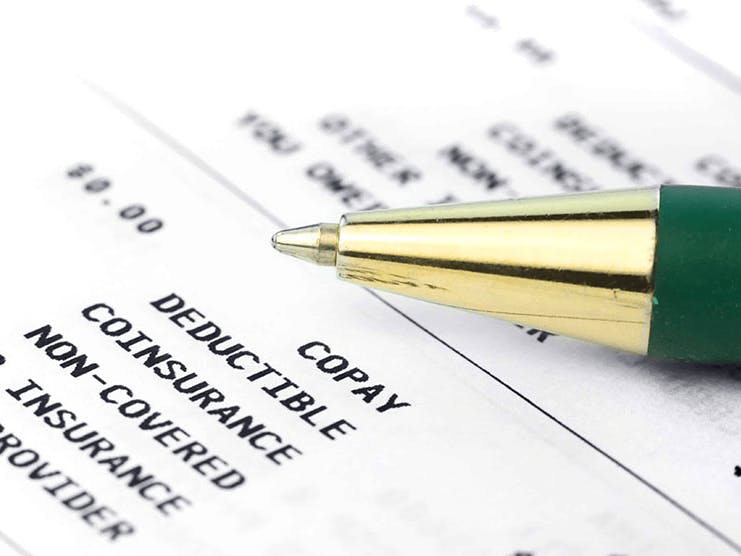
You must meet your yearly Part D deductible before you prescription drug plan begins paying its share.
The Medicare Part D deductible, or the amount you must pay for prescription drugs before your plan begins to pay, can vary by plan. However, no matter the plan, the 2023 Part D deductible cannot be more than $505 per year.
Because there are a couple of ways you can get Part D prescription drug coverage, the costs associated with out-of-pocket expenses like deductibles, premiums, and copays can vary. However, in most cases, the lower the deductible, the less you have to spend out-of-pocket before your insurance coverage kicks in.
Read to learn about the Part D deductible, how it works, and other costs associated with Part D coverage.
Medicare Part D yearly deductible
The Part D deductible is the amount you must pay each year for your prescriptions before your Part D plan pays its share. Because you can get Part D coverage through different private insurance companies, deductibles can vary between plans. Some plans may not have a deductible.
However, no Medicare drug plan can have a deductible more than $505 (in 2023).
For some plans, the Part D deductible is only applicable to certain Tiers or prescription drugs. For example, only drugs in Tier 3 and above have a deductible, while drugs in Tiers 1 and 2 do not. (See below for more information on drug Tiers.)
Your Part D deductible can also change each year, or even be eliminated, so be sure to review your Annual Notice of Change (ANOC) annually to understand any changes there may be.
How do I meet my deductible?
There are a few ways you can meet your Part D deductible, and whether you meet it or not and when can depend on:
- How much the deductible is
- How many prescription drugs you take
- What those drugs are, what Tier they fall into, and how much they cost
Your deductible then resets on January 1 each year.
Keep in mind that if you meet your deductible, that doesn’t mean you will no longer have out-of-pocket costs for prescriptions. You may still have to pay copays or coinsurance when you fill your prescriptions.
Examples of how your deductible affects your coverage and costs
For these examples, let’s say your drug plan’s deductible is the maximum allowable in 2023, or $505.
- Prescription A cost: $10
Prescription B cost: $7
Total monthly drug spending: $17
When you meet your deductible: Never - your total yearly spending is $204, so you’ll pay this amount out-of-pocket for your prescriptions.
- Prescription A cost: $15
Prescription B cost: $35
Total monthly drug spending: $50
When you meet your deductible: September - you’ll pay $50 per month for nine months before meeting your deductible.
- Prescription A cost: $100
Prescription B cost: $10
Total monthly drug spending: $110
When you meet your deductible: April - you’ll pay $110 per month for four months before meeting your deductible.
Keep in mind that if you have a lower deductible, for example $200, you may meet your deductible, and even meet it faster, than if the deductible is $505.
- Prescription A cost: $10
Prescription B cost: $7
Total monthly drug spending: $17
When you meet your deductible: December - your total yearly spending is $204, so you’ll meet your deductible during the final month of the year.
- Prescription A cost: $15
Prescription B cost: $35
Total monthly drug spending: $50
When you meet your deductible: April - you’ll pay $50 per month for four months before meeting your deductible.
- Prescription A cost: $100
Prescription B cost: $10
Total monthly drug spending: $110
When you meet your deductible: February - you’ll pay $110 per month for two months before meeting your deductible.
Premiums for Part D
In 2023, the national average monthly premium is about $45. However, the specific costs can vary by plan.
Note that if you have a higher income based on your IRS tax return, you may have to pay an income-related monthly adjustment amount in addition to your plan premium.

Medicare Part D copays
Copays and/or coinsurance for prescription drugs can vary by plan, especially depending on what tier your drug falls into.
Part D drugs are split into levels called “tiers,” and each tier has different copayment costs associated with them. Typically, tiers are:
- Tier 1: preferred generics (least expensive)
- Tier 2: generics
- Tier 3: preferred brand names
- Tier 4: nonpreferred brand names
- Tier 5: specialty drugs (most expensive)
Typically, the higher the tier, the higher the cost. Your costs will also depend on whether or not your prescriptions are in the formulary. You should also get your prescriptions filled at an in-network pharmacy to keep costs low.
When budgeting for prescription drug coverage, it’s important to know that Part D plans have a temporary limit on what the drug plan will cover, called the “coverage gap” or “doughnut hole.” This kicks in after you and your plan have spent a combined $4,660 (in 2023) on Part D supplies. Once you reach the coverage gap, you’ll pay no more than 25% of the cost for covered drugs.
Then, once you have paid $7,400 in out-of-pocket costs, you have reached the “catastrophic coverage” and your prescription drug coverage begins paying for most of your drug expenses again.
What is Medicare Part D?
Part D (prescription drug coverage) covers most outpatient prescription drugs. There are two ways to get Medicare drug coverage:
- Medicare Drug Plans. These plans will add Part D drug coverage to Original Medicare, some Medicare Cost Plans, some Private Fee-for-Service plans, and Medical Savings Account plans. In order to enroll in a separate drug plan, you must have Medicare Part A (hospital insurance) and/or Medicare Part B (medical insurance).
- Medicare Advantage (MA) Plan (Part C). With an MA plan, you’ll get Part A, Part B and Part D prescription drug coverage. MA plans offer the same coverage for services and supplies that Original Medicare does, as well as additional coverage such as dental, vision and hearing.
Note that not all MA plans offer drug coverage, so be sure to do your research before selecting a plan. However, if you are enrolled in an MA plan that offers drug coverage, and join a separate drug plan, you will be disenrolled from your MA plan and returned to Original Medicare. Talk to your plan for more information about your current health coverage.
When choosing a drug plan, make sure any prescription drugs you currently take are listed on the formulary. Otherwise, you may have to pay for the cost completely out of pocket.
Additionally, Part D also covers most vaccines (other than those covered by Part B).
How to get help with prescription costs
If you need assistance with costs associated with prescription drugs, consider the following tips:
- Consider switching to generic or other lower-cost drugs. These drugs work just as well as brand-name drugs you may be taking now, so talk to your doctor or pharmacist to learn if these are an option for you.
- Choose a Medicare Part D plan that offers additional coverage in the coverage gap. Some plans offer additional coverage, particularly for generic drugs, though typically have a higher monthly premium.
- Ask about Pharmaceutical Assistance Programs. Some pharmaceutical companies offer help paying for medications for people enrolled in Part D coverage, and some states also offer help paying for prescriptions, premiums and other drug costs. Contact Medicare to learn if your state offers this assistance.
- Apply for Extra Help. Medicare and Social Security offer a program called Extra Help, which helps those with limited income.
How to apply for Medicare Part D
The easiest way to find a drug plan that’s right for you is with our Find a Plan tool. Just enter your zip code to start comparing prescription drug plans in your area.
Additional resources
Costs for prescription drug coverage
External Website Link
Drug Tiers: Understanding the Medicare Part D Formulary
Internal Website Link
Medicare Part D Late Enrollment Penalty
Internal Website Link
The Medicare Donut Hole Explained
Internal Website Link



